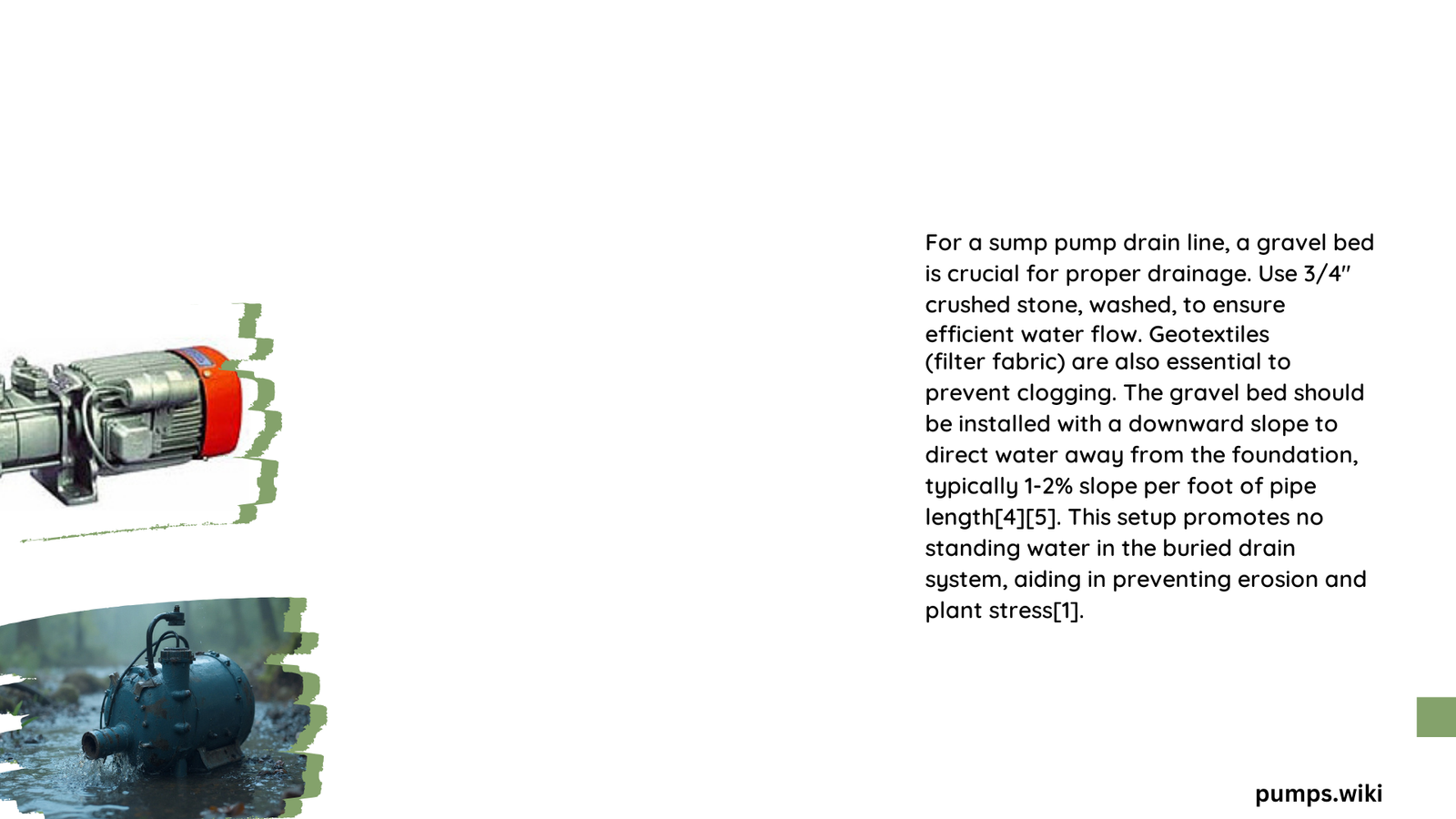A gravel bed for sump pump drain line is a critical drainage solution that prevents water accumulation, protects your basement from flooding, and ensures efficient water management. By strategically placing the right type and size of gravel, homeowners can create a robust drainage system that effectively channels water away from their foundation, reducing potential water damage risks and maintaining a dry, secure living environment.
What Makes Gravel Bed Essential for Sump Pump Drainage?
Gravel beds serve as a crucial component in sump pump drainage systems, providing multiple functional benefits that enhance water management and protect residential structures. Unlike traditional drainage methods, a well-constructed gravel bed offers superior water flow, debris filtration, and long-term structural integrity.
Why Choose Specific Gravel Size?
| Gravel Size | Water Flow | Debris Filtration | Compaction Risk |
|---|---|---|---|
| ¾ – 1 inch | Excellent | Good | Low |
| < ½ inch | Poor | Limited | High |
| > 1.5 inch | Too Rapid | Minimal | Very Low |
Key Characteristics of Optimal Gravel
- Diameter Range: 3/4 to 1 inch stones
- Composition: Clean, washed gravel
- Shape: Rounded or angular stones
- Cleanliness: Free from dirt and organic matter
How to Prepare Excavation for Gravel Bed?
Proper preparation is fundamental to creating an effective gravel bed for sump pump drain line. Follow these systematic steps:
- Site Assessment
- Identify potential water accumulation zones
- Check local water table levels
-
Evaluate soil drainage characteristics
-
Excavation Process
- Dig 24-30 inches deep
- Maintain 18-inch width
- Remove all debris and organic materials
- Ensure level bottom surface
What Tools Are Required for Installation?
Essential tools for creating a gravel bed include:
- Shovel or mechanical excavator
- Measuring tape
- Level
- Protective gloves
- Wheelbarrow
- Gravel (3/4 to 1 inch)
- Landscape fabric (optional)
How to Layer Gravel Effectively?
Layering Technique
- Base Layer
- Spread 2-3 inches of gravel
- Ensure uniform distribution
-
Compact gently
-
Drainage Layer
- Add additional 2-3 inches of gravel
- Create slight slope for water direction
- Use landscape fabric between layers (optional)
What Maintenance Strategies Preserve Gravel Bed?
Regular maintenance ensures long-term performance:
- Quarterly Inspection
- Check for sediment accumulation
- Verify gravel level
-
Assess water flow efficiency
-
Annual Maintenance
- Replace compacted gravel sections
- Clean sump pump intake
- Verify drainage system functionality
Potential Challenges and Solutions
| Challenge | Solution | Prevention |
|---|---|---|
| Sediment Buildup | Replace gravel | Use landscape fabric |
| Poor Drainage | Regrade gravel | Proper initial installation |
| Pump Inefficiency | Clean intake | Regular maintenance |
Conclusion

A meticulously designed gravel bed for sump pump drain line represents a strategic investment in home protection. By understanding installation techniques, maintenance requirements, and potential challenges, homeowners can create robust drainage systems that safeguard their properties against water-related damages.
